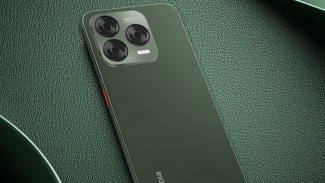NASA Conveys Humans Can Live and Work on the Moon Soon
- New Scientist
VIVA – A NASA official conveys that humans are on track to living and working on the moon by 2030. A leader of the Orion spacecraft program for NASA, Howard Hu, said that they will send people to live on the surface and conduct scientific research.
"We are going to send people to the surface and they will live on the surface and they are going to do science research," Howard Hu remarked.
NASA successfully launched its powerful Space Launch System (SLS) rocket last week and sent the Orion spacecraft to the Moon. The repeatedly delayed launch kicked off NASA's Artemis mission, the first major step toward putting humans back on the Moon after an absence of nearly 50 years.
Orion was released this time to test its ability to carry a capsule to the Moon and back to Earth. Future flights are expected to take astronauts with it as it circles the celestial body.
Ilustrasi astronot yang sedang bercocok tanam di Bulan.
- Getty Images
If all goes well, the same spacecraft could then be used to put humans on the surface of the Moon, for the first time since 1972, including the first woman astronauts.
The current plan is for the crew to land near the Moon's south pole, where they will spend about a week looking for signs of water.
According to the Science Alert site, if the precious liquid is found, it could be used to help fuel rockets on their way to Mars. This means permanent human settlements would need to be built to support mining and scientific activities.
"This is the first step we are taking for long-term space exploration, not only for the United States but also for the world," Howard Hu remarked.
The United States agency just launched its new rocket and space capsule on a mission to the Moon on Wednesday, November 16, 2022, in an unmanned test flight known as Artemis I.
The massive rocket blasted off from NASA's Kennedy Space Center in Cape Canaveral, Florida, at 01:48 ET or 1:48 PM Central Indonesia Time.
Also, it was the first launch of NASA's long-awaited Space Launch System, or SLS, a next-generation booster that NASA predicts will be the most powerful rocket in the world.
On top of the 322-foot-tall rocket is the bubblegum-shaped Orion capsule that will eventually carry astronauts to the moon.



























